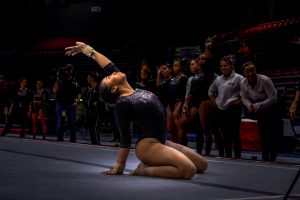Chemistry professors use $535K grant
October 4, 2006
DeKALB | For the next three years, NIU associate chemistry professor and electrochemist Petr Vanýsek will have his work cut out for him.
Vanýsek and Mark Schlossman, an associate physics professor at the University of Illinois at Chicago, have been given a $535,000 grant to research immiscible, or unmixable, liquids.
The project
The grant was awarded by the National Science Foundation, an independent U.S. government agency, and according to the foundation’s Web site, it is concerned with promoting the progress of science, advancing the national health, prosperity and welfare.
Of the $535,000, $98,000 will go directly into the NIU account, Vanýsek said.
For the next three years, Vanýsek and Schlossman will use the money to research immiscible liquids, such as oil and water.
“Although the fact is known that oil and water do not mix, the reasons for it to happen are less obvious,” Vanýsek said. He said the molecules cannot sense each other and don’t know to avoid each other until they come in contact.
“It’s not like a dog and cat who can see each other and sniff each other from a distance,” Vanýsek said.
Vanýsek and Schlossman hope to find how the boundary is composed and what its properties are. Both hope their research can benefit modern medicine.
“Some antibiotics do not penetrate easily to certain organs, such as the brain,” he said. “If we can understand how those boundaries are structured, we can advise how to deliver medications into these organs.”
Another problem this research can benefit is the cleanup of oil slicks during oil spills; Vanýsek said although they will not be able to prevent oil slicks, they can propose more effective cleanup methods.
Schlossman and Vanýsek will also be able to study extraction properties of environmentally-friendly solvents.
“There are possible substitutes for solvents used to clean greasy parts, extract caffeine to make decaf coffee or even to be used in dry cleaning,” Vanýsek said.
Vanýsek’s role
Vanýsek is a scientist experienced in relationships between electricity and chemistry. In addition to teaching at NIU, Vanýsek regularly does research in analytical chemistry, physical chemistry and applied electrochemistry.
Vanýsek said although he and Schlossman are from different universities, their research does not suffer because of the distance between them.
“The actual experiments are done in 24-hour runs lasting several days,” Vanýsek said. “Once we are back in our offices we rely on e-mailing detailed reports.”
Lauren Stott is a Campus Reporter for the Northern Star.






